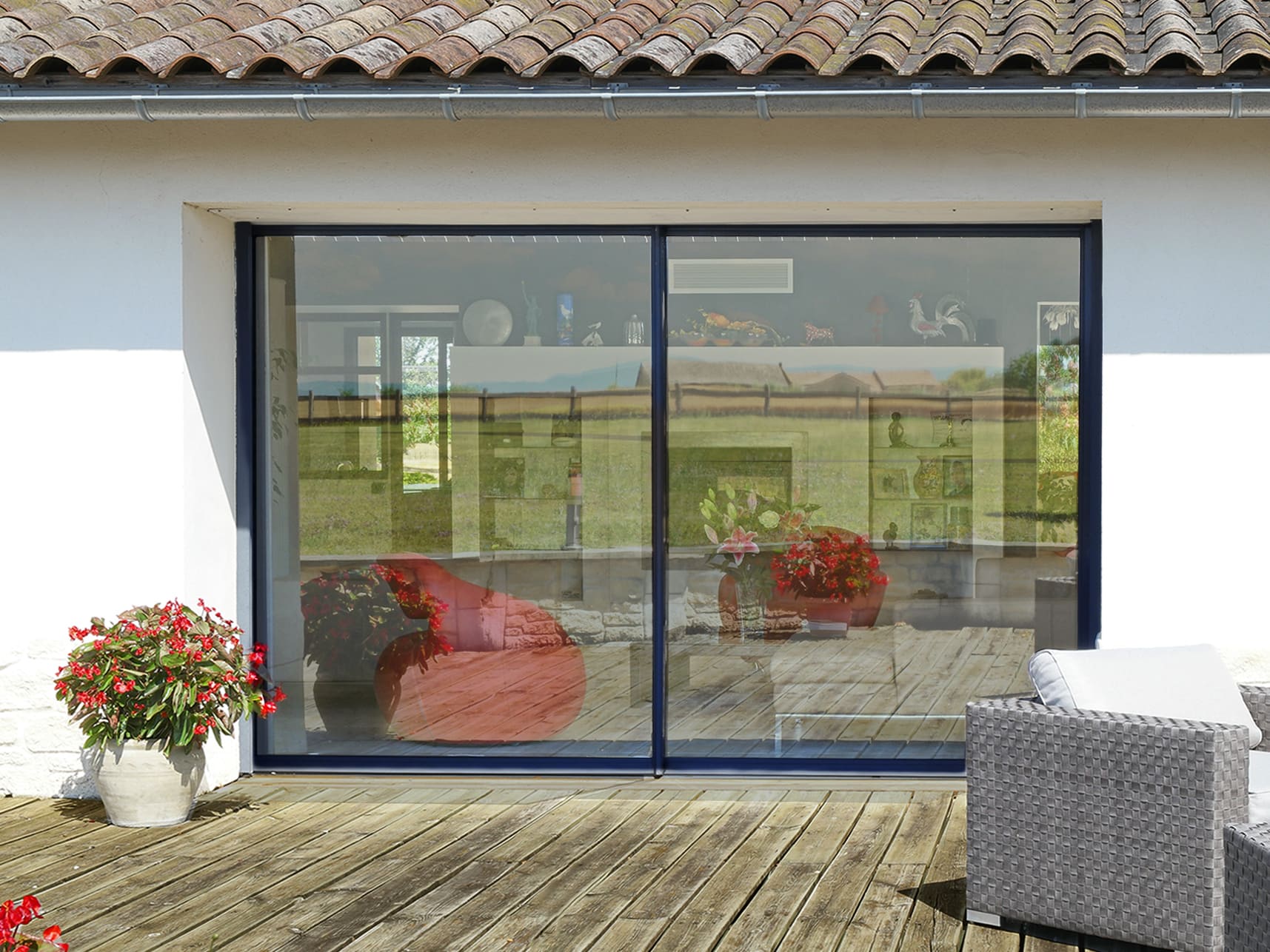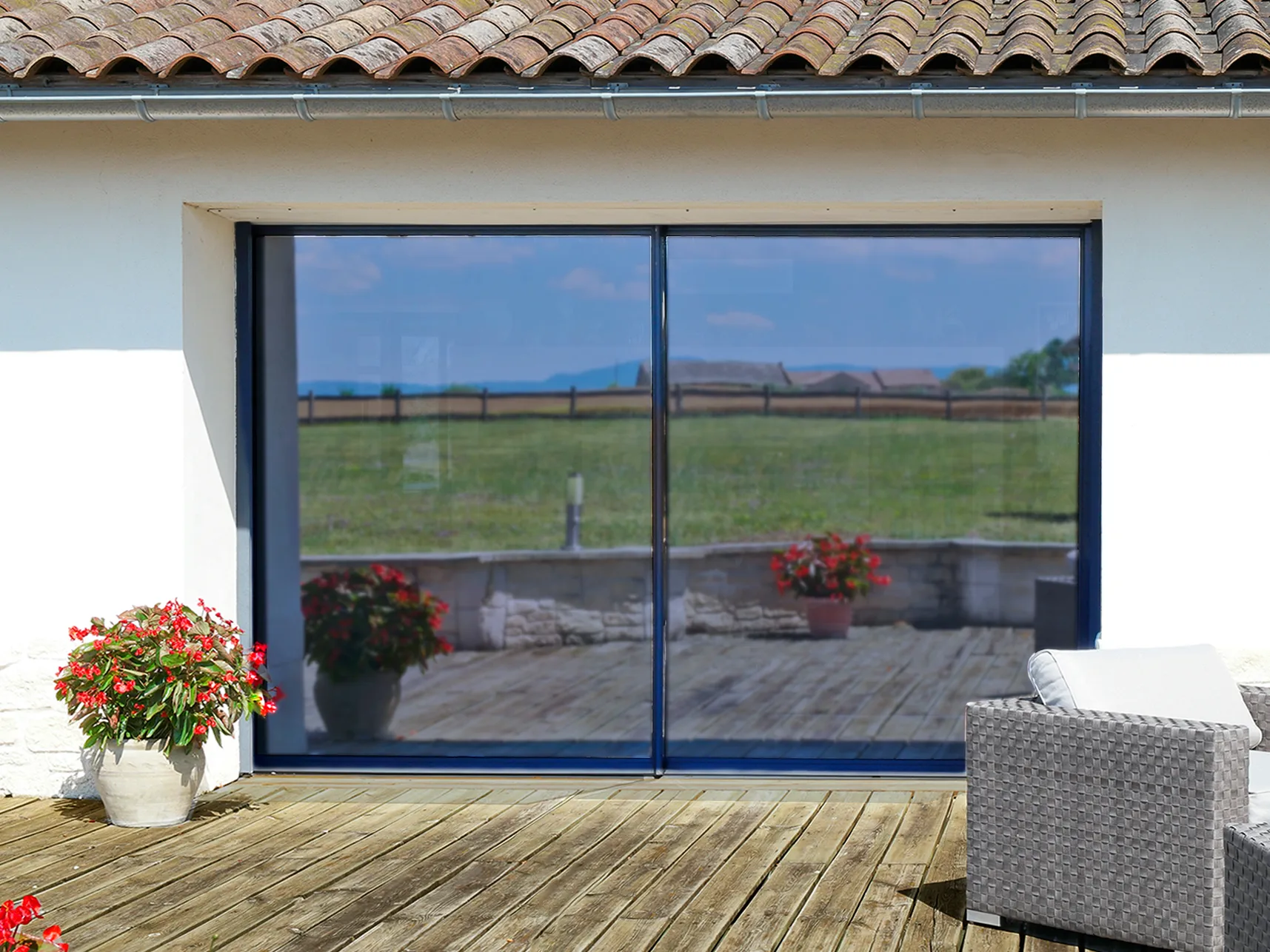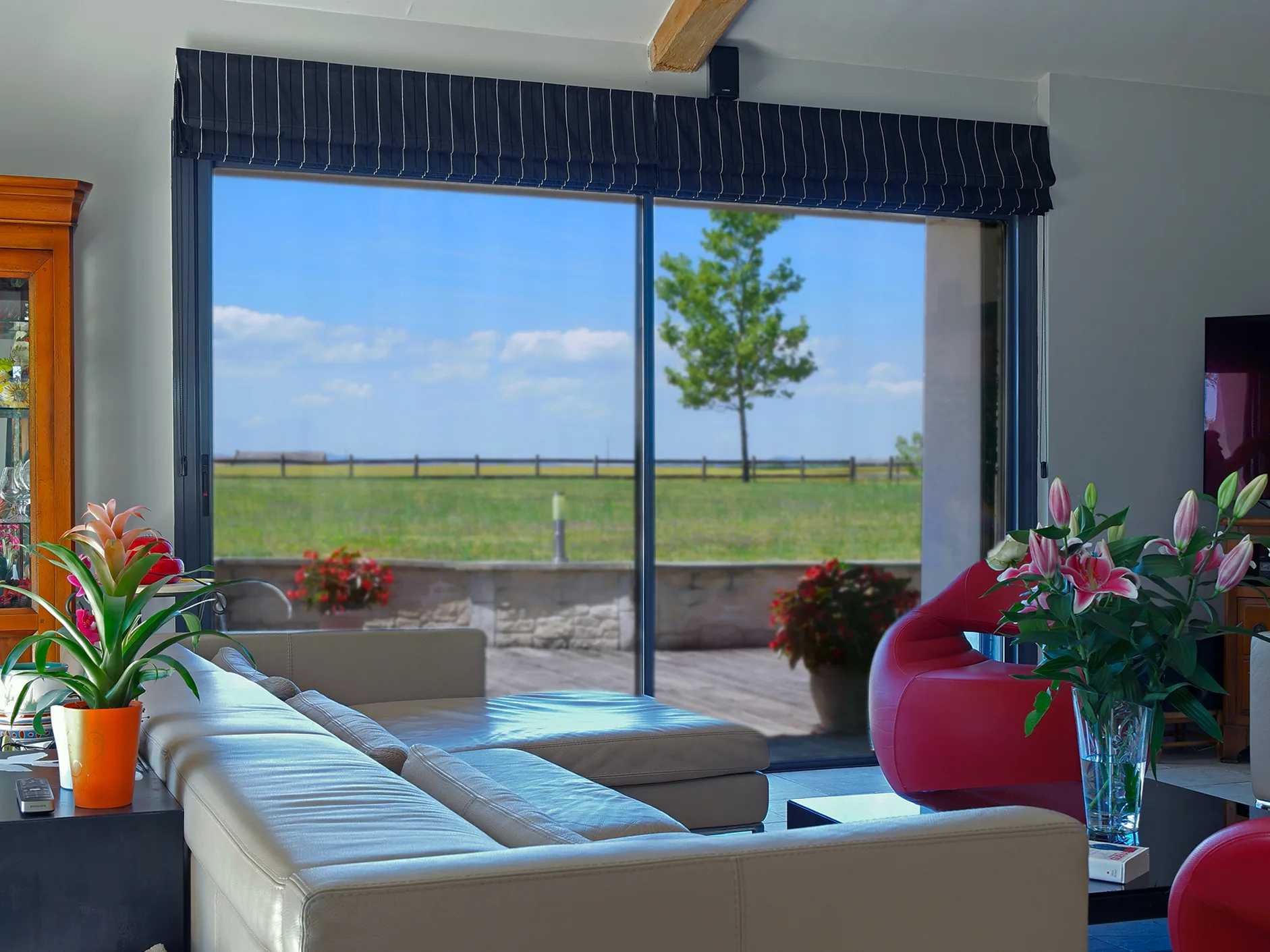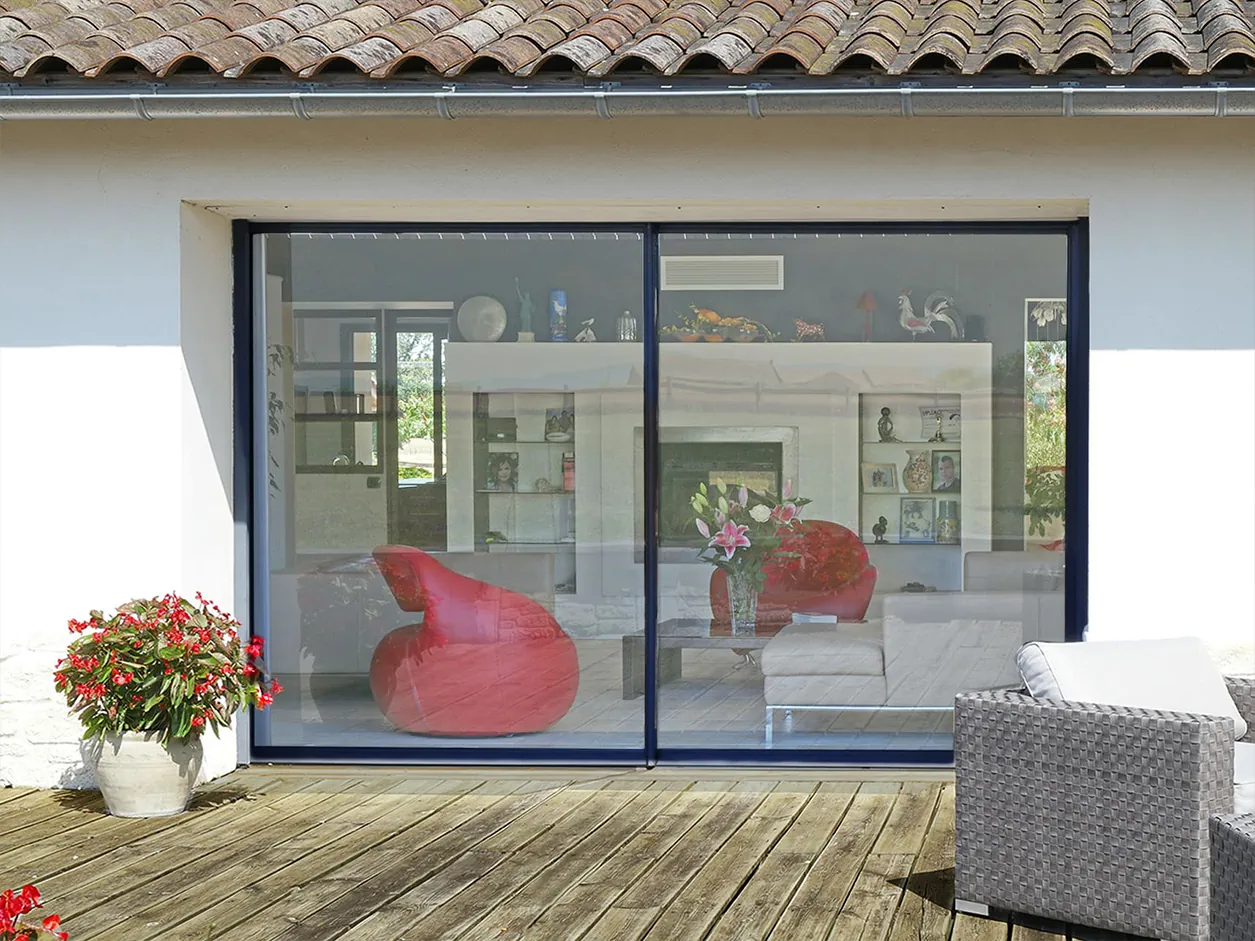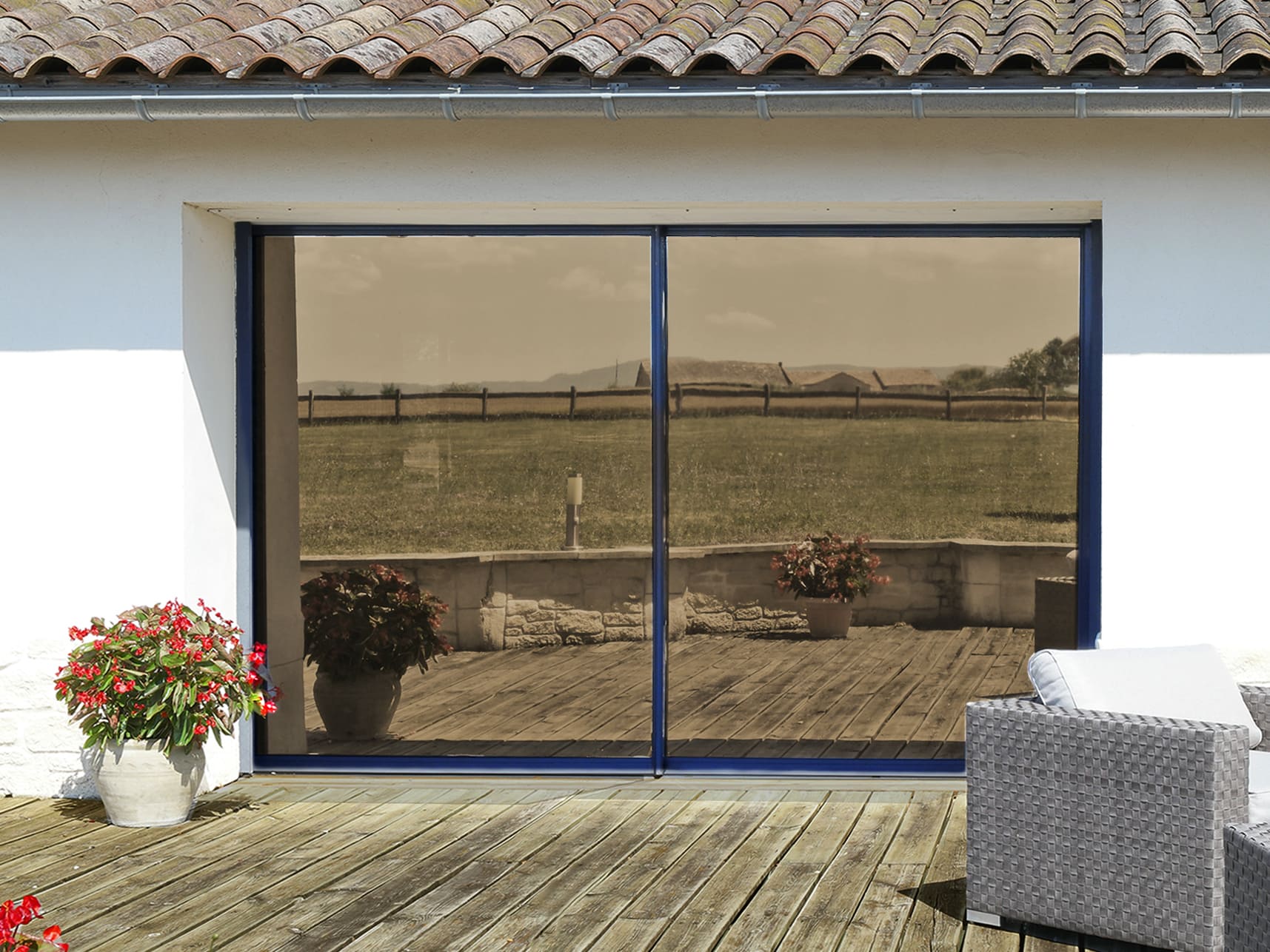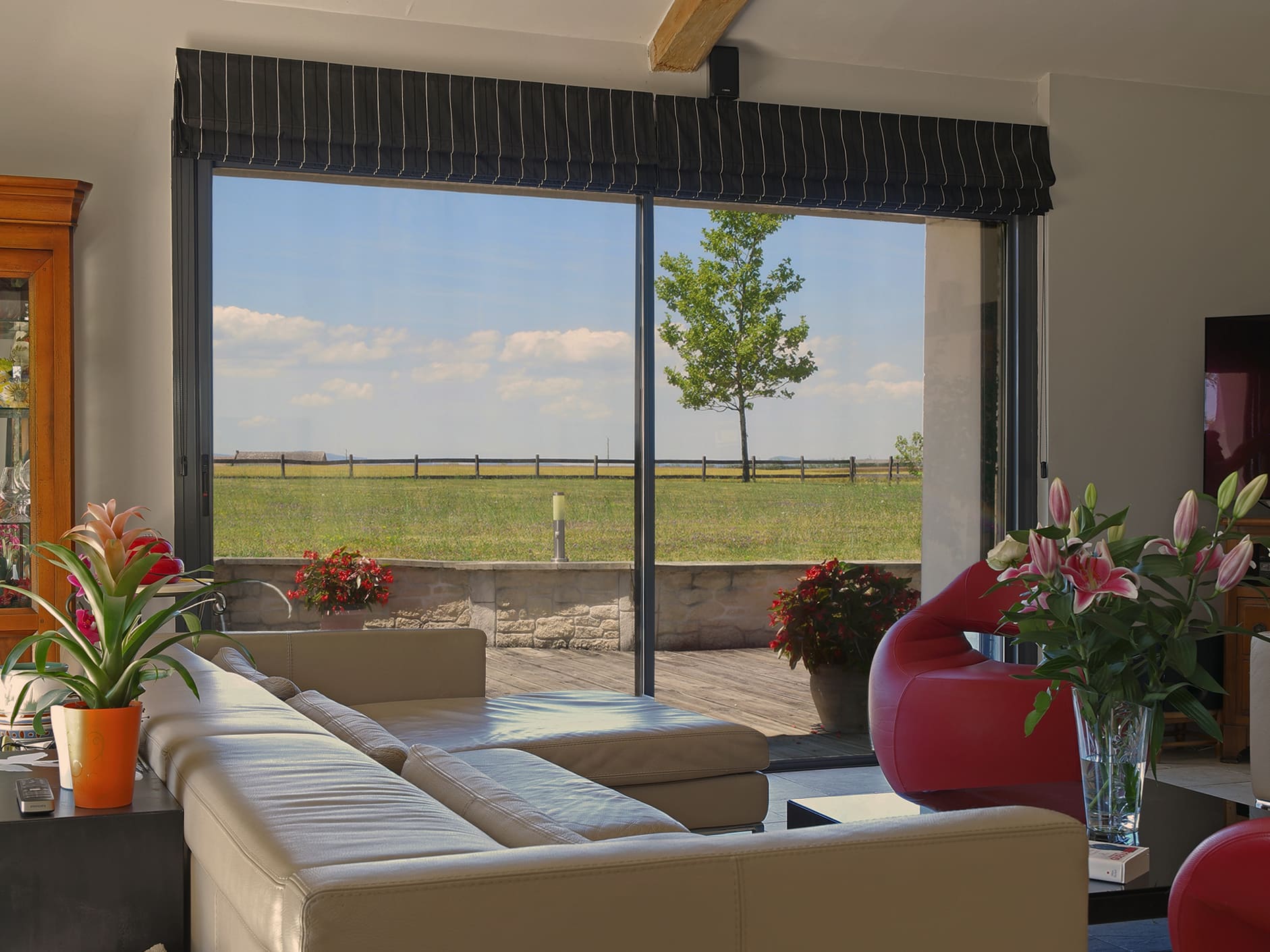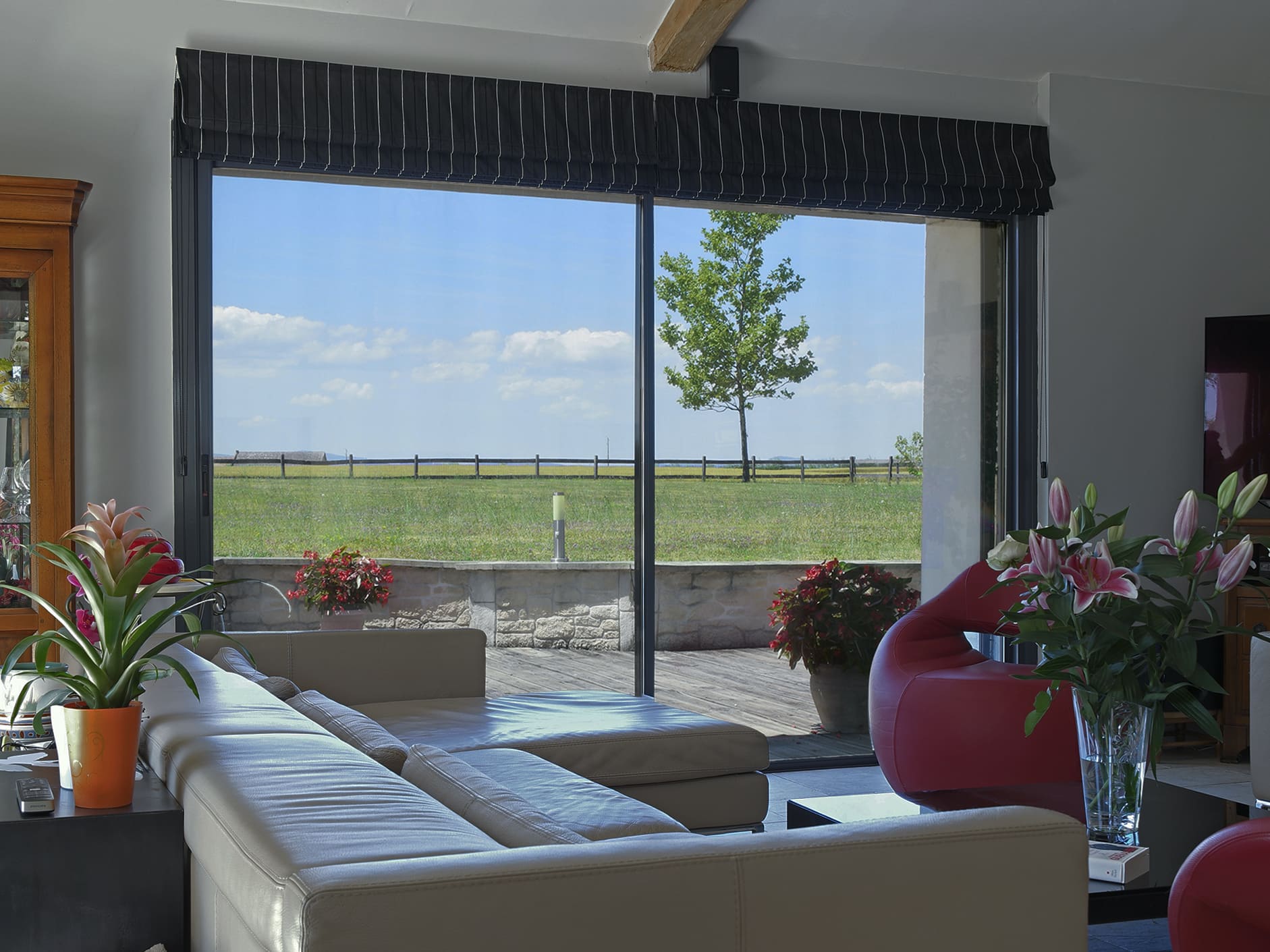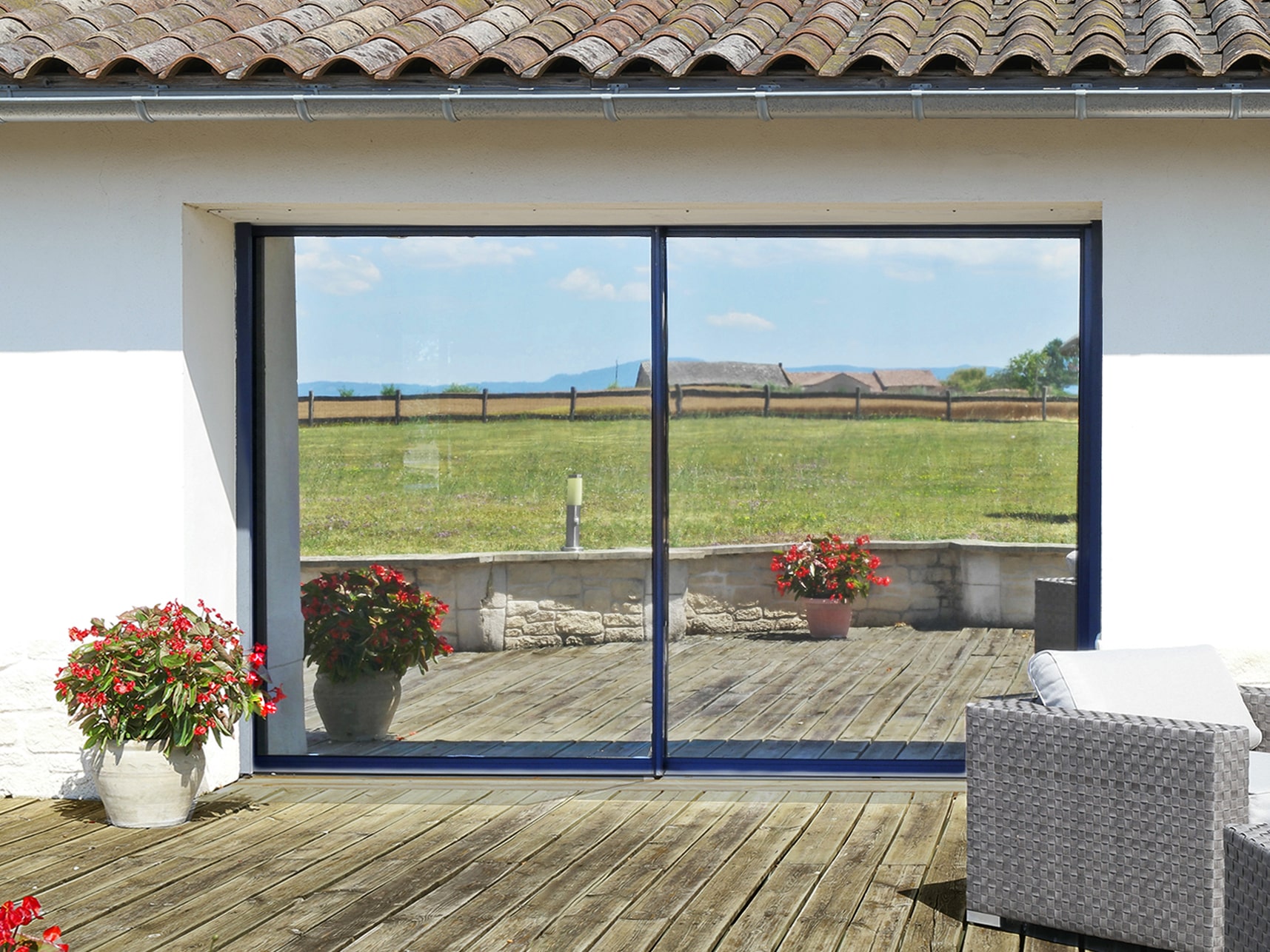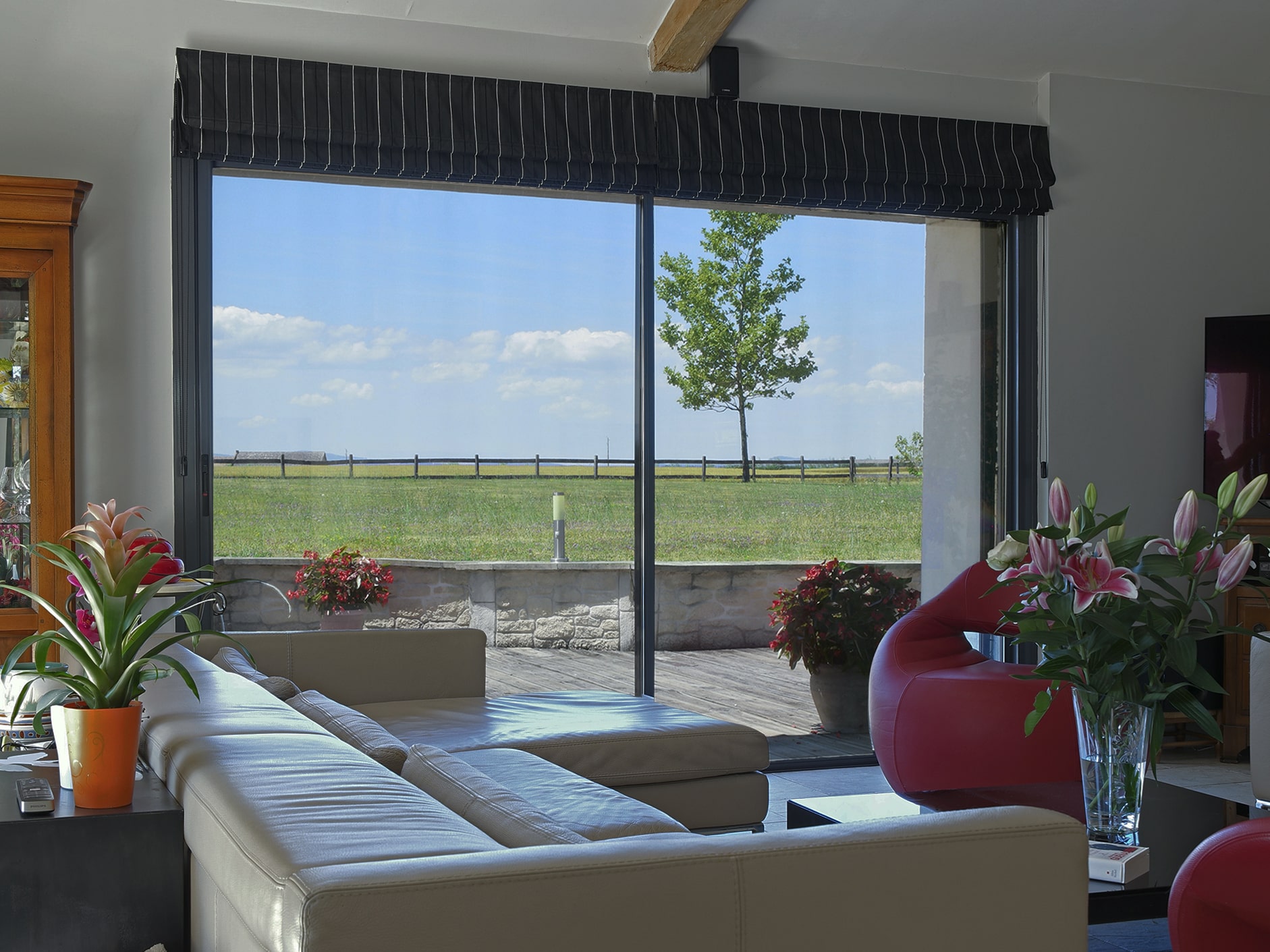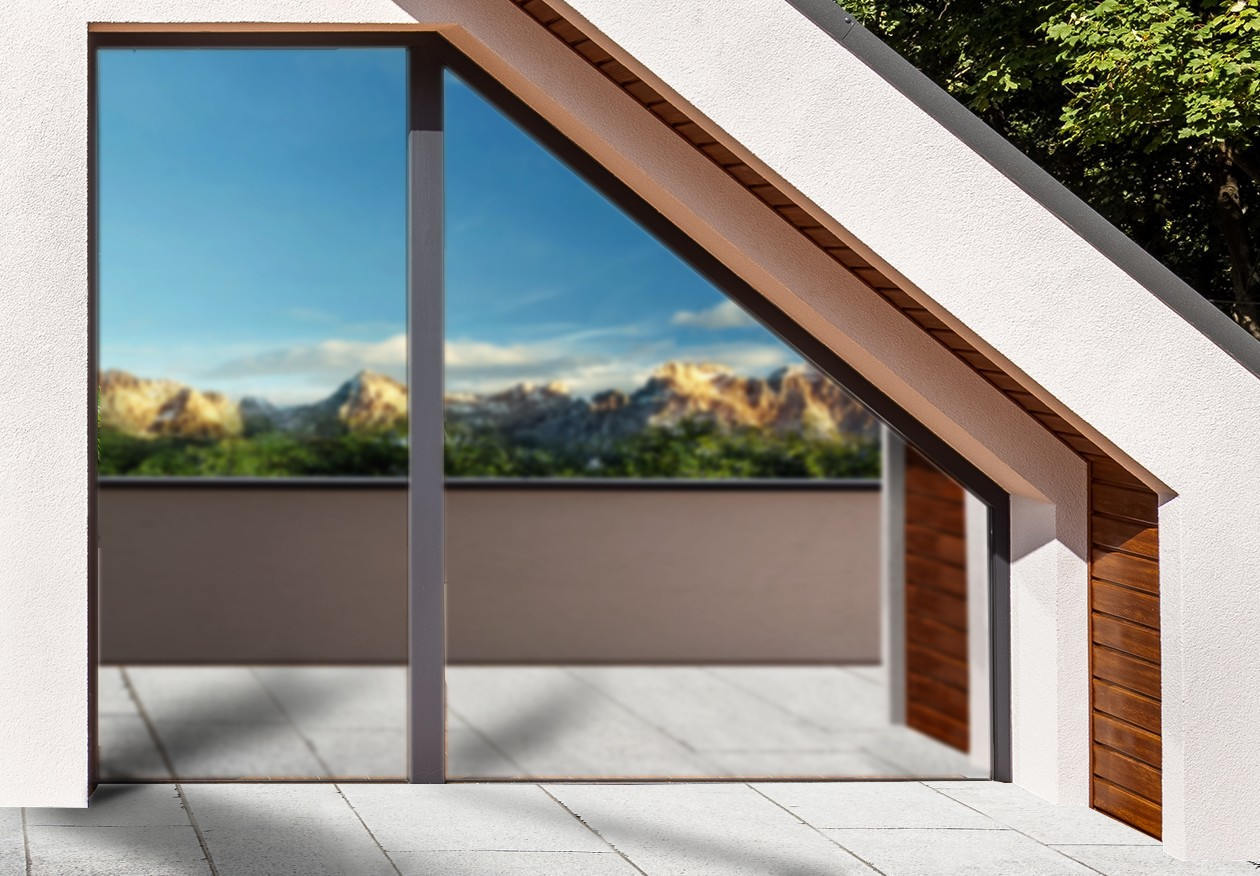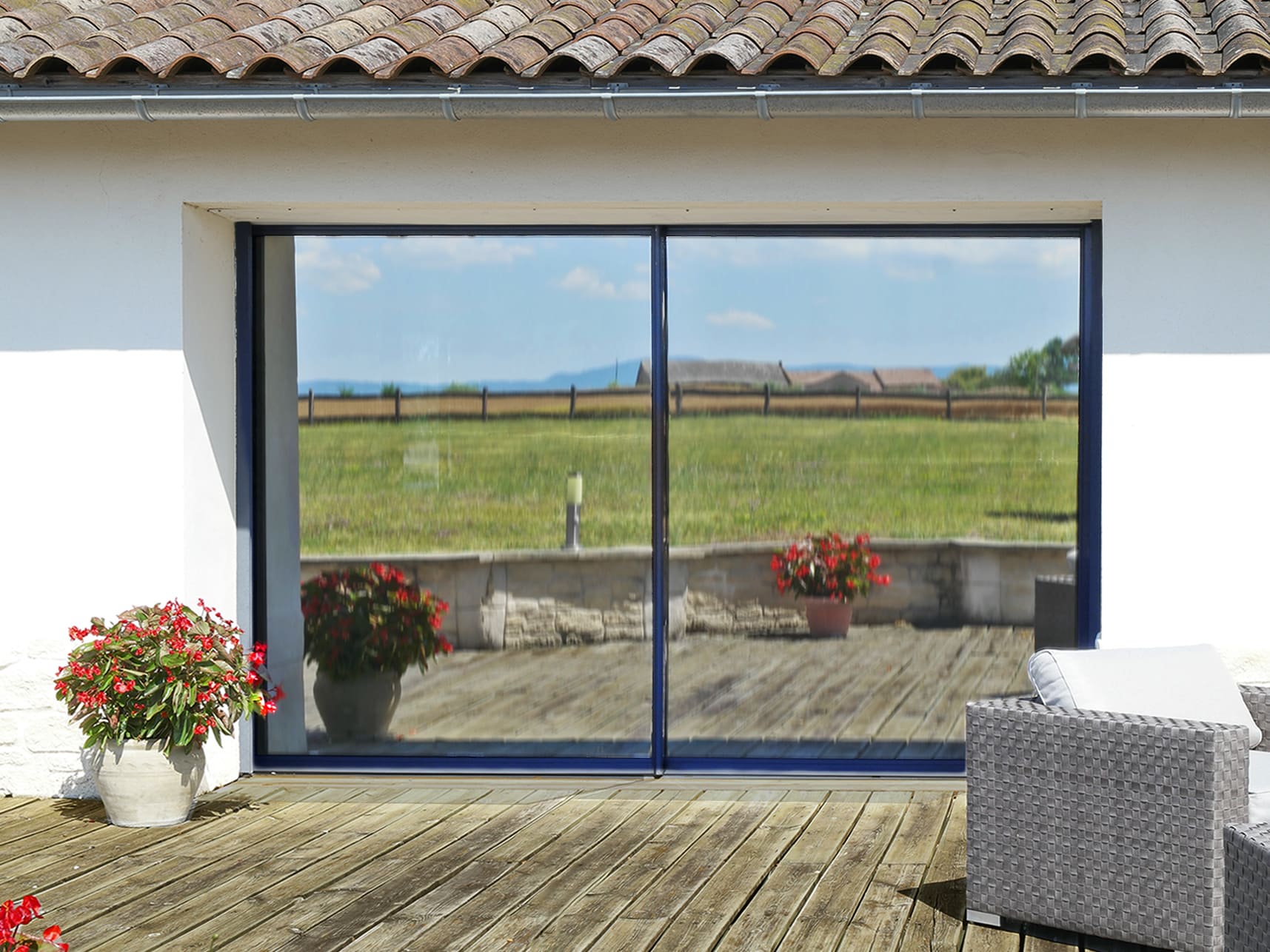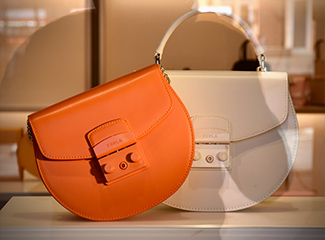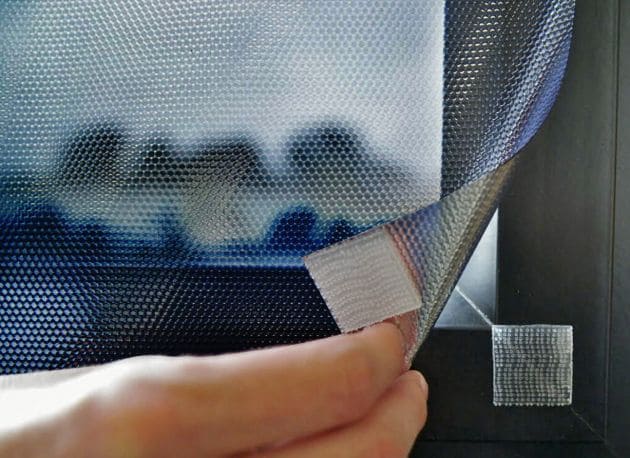
08/09/2025
written by Laura P
What are the criteria for choosing solar film for buildings?
Choosing the right solar film for your building: our advice
The heat can quickly become stifling in an office with inadequate protection from the sun, affecting comfort and productivity. For your customers, it's essential to offer effective solutions. Why not consider Luminis Films ' heat protection film? This easy-to-install protection transforms interior comfort. But one question remains: how do you choose the right solar film? Follow the guide!
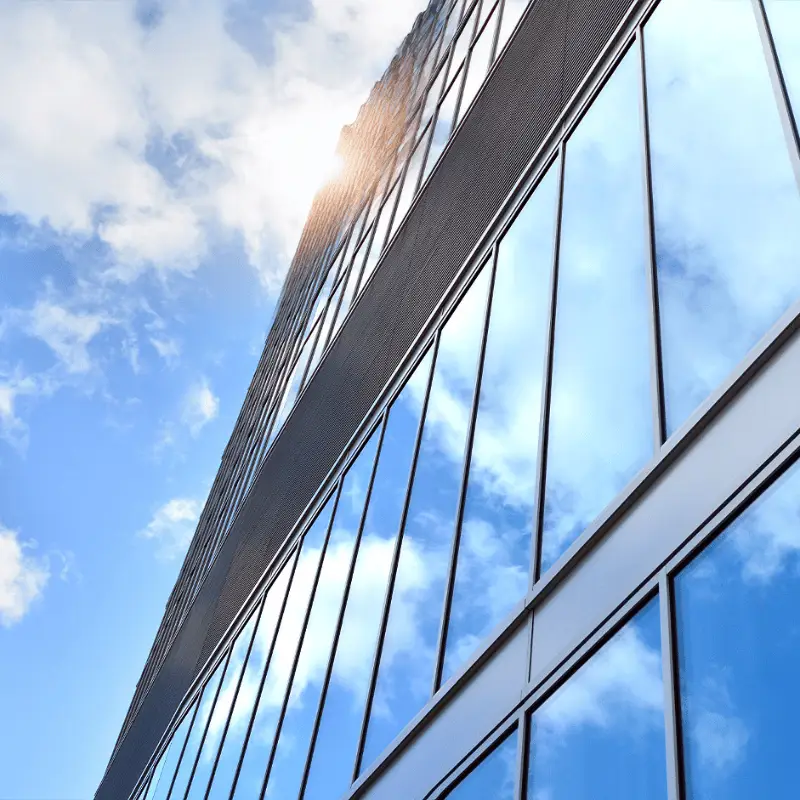
Solar film support: electrostatic or adhesive?
It all starts with the choice of substrate. You have two options: adhesive solar film or electrostatic solar film.
Adhesive solar control film is particularly recommended for large bay windows in offices, homes or business premises. And why? Because it offers long-lasting installation, excellent value for money and impeccable aesthetics. From the inside, no one will notice its presence: discretion assured!
Electrostatic solar film has a major advantage: it can be repositioned at will. It's the ideal solution if your customers want toinstall itin summer and remove it in winter. What's more, installation is ultra-simple, even if you make a mistake. Practical, isn't it?
Our best electrostatic and adhesive solar films
Here is a selection of our most popular references:
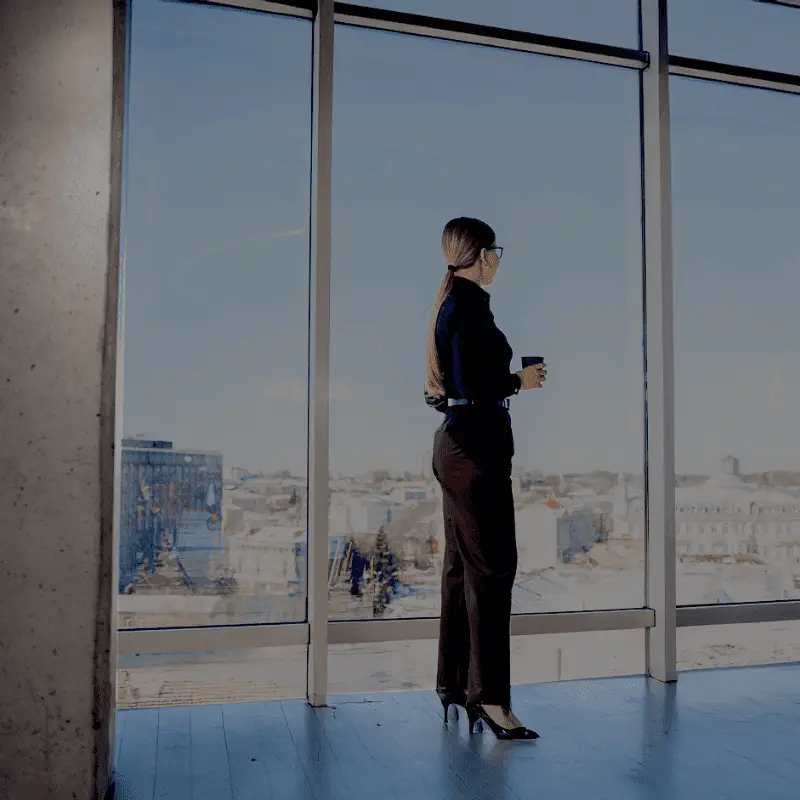
Sunscreen color: tinted or untinted?
Good news: there's a wide range of sun protection film shades to choose from. Each shade has its own purpose... and its own style!
The most common? Light silver solar film: it reflects the environment and is discreet yet high-performance. For even more originality, offer your customers a copper-metallized solar film, ideal for matching glazing to a warm façade. Or a blue metallized anti-heat film, perfect for lightly coloring glass surfaces while blocking heat.
Combining solar performance and aesthetics is finally possible!
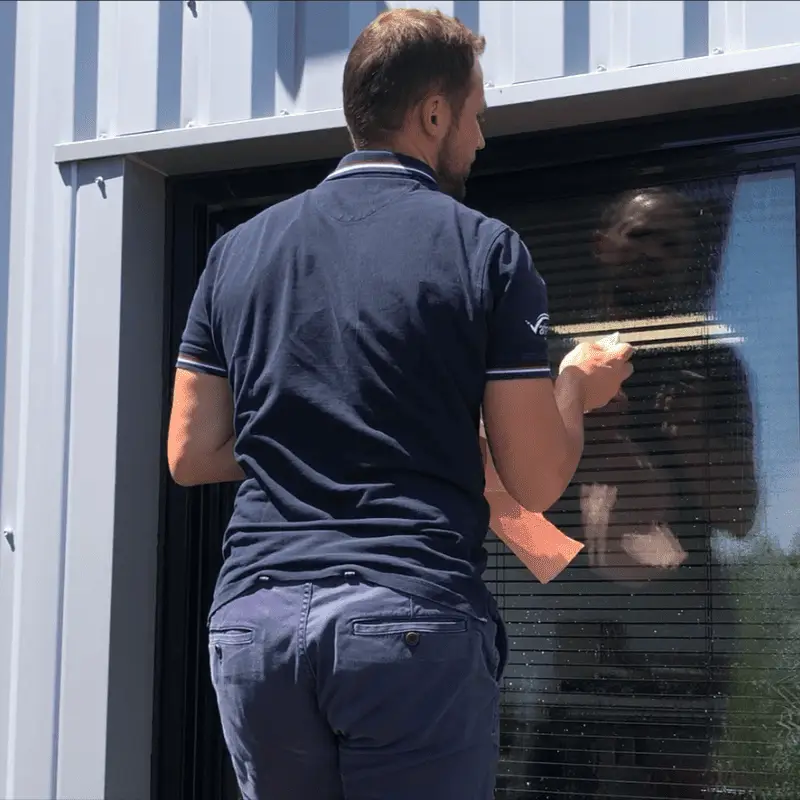
Solar film characteristics: a good efficiency/light transmission ratio?
It's a fact: the darker the solar film, the more heat it rejects... but it also reduces natural light. Fortunately, things are changing!
At Luminis Films, we offer anew generation of very clear films capable of rejecting up to 70% of the sun's energy while allowing maximum light through. The eye adapts easily to a slight drop in brightness (usually between 10 and 12%), but your customers will hardly notice the difference.
Ask them the right questions:
- Do they want to maximize heat protection?
- Do they prefer brightness?
- Or do they seek a balance between the two?
Tip: don't hesitate to ask for free samples. Testing shades changes everything!
Our solar films combine efficiency and natural light
Here are a few must-sees that we recommend without hesitation:
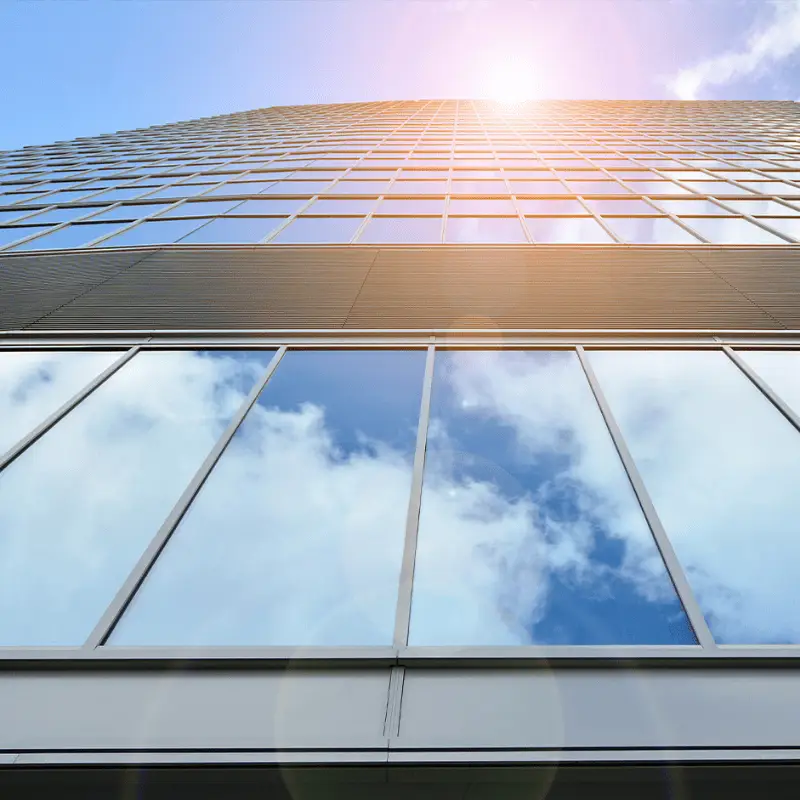
Solar film glazing: single or double glazing?
The type of glazing is crucial to the choice and installation of solar control film. Here are some best practices:
- Sur simple vitrage ou double vitrage < 1,2 m² : la pose en intérieur est possible ;
- For other types of glazing: opt for external installation to maximize performance and avoid the risk of thermal shock;
- For synthetic glazing (polycarbonates, Plexiglas...): choose a specific film.
Caution: for skylights and sloping walls, avoid indoor installation.
In doubt? Our advisors are here to help. Use the filters on the site to refine your choice by glazing!
Good to know: don't feel like installing a solar film yourself? Our installer is here to help! Ask him for a quote and availability.
As you can see, choosing the right solar protection film means taking several criteria into account (substrate, tint, performance, type of glazing). As a professional, you have an essential role to play in advising your customers. Offer them optimum thermal comfort without compromising on aesthetics!

